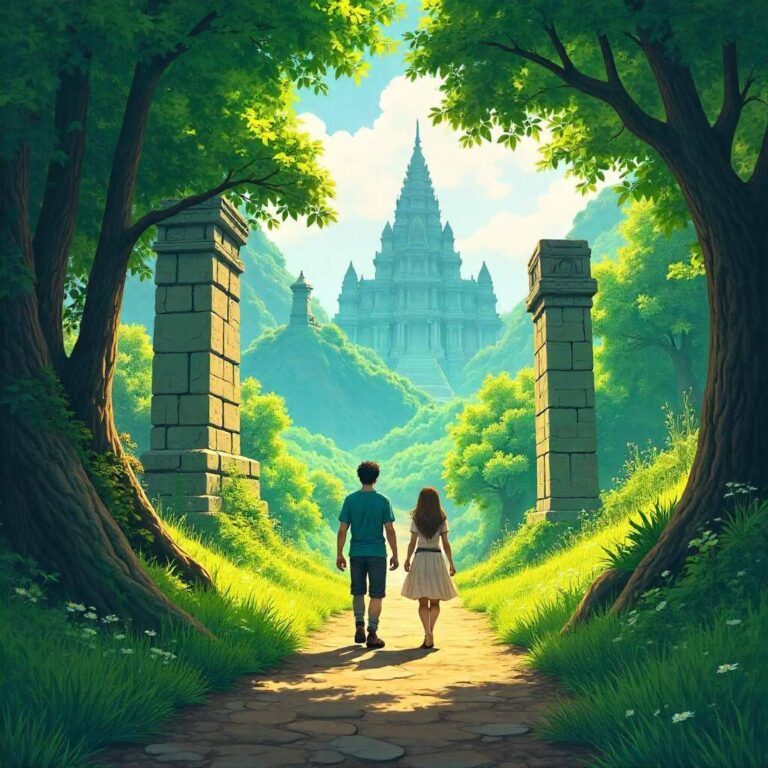Exploring Koyasan: A Spiritual Journey in Japan
Koyasan, a sacred mountain located in Wakayama Prefecture, is not only a UNESCO World Heritage Site but also a pivotal center for Shingon Buddhism. Founded in the 9th century by the famed monk
Kukai (also known as Kobo Daishi), this serene town offers travelers profound spiritual experiences, stunning temples, and a glimpse into Japan’s rich religious traditions. If you’re considering a visit to Koyasan, this comprehensive travel guide will equip you with invaluable insights and tips for an enlightening journey.
The Significance of Kukai and Koyasan
Kukai was a monk, scholar, and calligrapher who introduced esoteric Buddhism to Japan. His vision led to the establishment of Koyasan as a site for meditation and pilgrimage. Today, Koyasan houses over 100 temples, many of which offer lodging and vegetarian meals to visitors. Understanding Kukai’s legacy enhances your appreciation of Koyasan’s spiritual atmosphere and architectural beauty, making your visit not just a sightseeing tour but a journey into Japan’s spiritual heart.
Practical Logistics: Getting to Koyasan
Planning your trip to Koyasan requires careful consideration of transportation, accommodation, and dining options. Below are detailed logistics to ensure a smooth travel experience.
Getting There
1. From Osaka: – Train: Take the Nankai Koya Line from Nankai Namba Station directly to Gokurakubashi Station (approximately 1 hour 30 minutes). The cost is around 1,400 yen. From Gokurakubashi, take the cable car up to Koyasan (approximately 5 minutes, 600 yen). – Bus: Alternatively, you can take a bus from Osaka, but the train offers a more scenic route. 2. From Kyoto: – Train: Travel from Kyoto Station to Namba Station (around 45 minutes, 560 yen) and then switch to the Nankai Koya Line to complete the journey to Koyasan. 3. From Tokyo: – Train: Take the Shinkansen from Tokyo to Shin-Osaka, then transfer to the JR Line to Namba, and finally take the Nankai Koya Line to Koyasan. The total travel time is approximately 4 hours and will cost around 14,000 yen.
Accommodation
In Koyasan, you have the unique opportunity to stay in a temple. This experience offers spiritual quietude and insight into monastic life. 1. Temple Lodging (Shukubo): – Ekoin Temple: Offers a comfortable stay with traditional tatami rooms and vegetarian meals. – Fudoin Temple: Known for its beautiful gardens and serene ambiance. – Cost: Prices range from 8,000 yen to 15,000 yen per night, including dinner and breakfast. 2. Guesthouses and Hotels: If temple lodging isn’t your preference, several guesthouses and hotels offer modern amenities without compromising the tranquil atmosphere.
Cultural Insights: Immersing Yourself in Spiritual Practices
Visiting Koyasan is not just about seeing temples; it’s about engaging with the spiritual practices that define this sacred site. Here are a few ways to deepen your experience:
Participate in Morning Prayers
If you stay in a temple, wake up early to join the monks in morning prayers. This unique experience allows you to observe the rhythmic chanting and meditative practices that are central to Shingon Buddhism.
Visit Okunoin Cemetery
One of the most revered sites in Koyasan, Okunoin is the final resting place of Kukai. You’ll find thousands of gravestones lining the paths, representing centuries of pilgrims. The serene atmosphere is perfect for reflection, especially during dusk when lanterns are lit.
Practice Meditation
Many temples offer meditation sessions for visitors. Look for programs in places like Daishido Temple, where you can learn about Zazen (seated meditation) and its significance in Japanese culture.
Insider Tips: Making the Most of Your Visit
1. Dress Modestly: When visiting temples, it’s vital to dress respectfully. Wear comfortable, modest clothing that allows for easy movement, especially if you plan to participate in rituals or ceremonies. 2. Language Barrier: While many signs are in English, learning a few basic Japanese phrases can enhance your experience. Locals appreciate the effort, and it can lead to richer interactions. 3. Use a Guide: Hiring a local guide can provide invaluable insights into the history and significance of Koyasan’s sites that you might miss on your own. Many guides can arrange for unique experiences like tea ceremonies or calligraphy sessions.
Budget Considerations: Cost Breakdown
Traveling to Koyasan can be affordable with proper planning. Here’s a budget breakdown to help you estimate your expenses: – Transportation: – Train from Osaka to Koyasan: 1,400 yen one-way. – Cable car to Koyasan: 600 yen one-way. – Accommodation: – Temple lodging: 8,000-15,000 yen per night (includes meals). – Guesthouses: 5,000-10,000 yen per night. – Food: – Meals: Vegetarian meals at temple lodgings are typically included, but dining out will cost around 1,500-2,500 yen per meal. – Entrance Fees: – Most temples are free, but some may charge a nominal fee (around 300-500 yen). Overall, budgeting around 15,000 to 25,000 yen per day should allow adequate flexibility for transportation, food, and experiences.
Timing Recommendations: When to Visit Koyasan
Koyasan is beautiful year-round, but each season offers a unique experience. Here’s what to expect throughout the year:
Spring (March to May)
– Highlights: Cherry blossoms bloom in early April, creating picturesque landscapes. – Recommendation: Visit during this time for mild weather and vibrant colors. However, expect higher crowds.
Summer (June to August)
– Highlights: The summer months are warm, and the surrounding nature is lush. – Recommendation: This is a great time for hiking, but be prepared for rain, especially in June.
Autumn (September to November)
– Highlights: Autumn foliage paints Koyasan in stunning reds and yellows, with mid-November being peak season. – Recommendation: Ideal for photography and pleasant weather. Book accommodations in advance as this is a popular time.
Winter (December to February)
– Highlights: A quieter time with serene and snowy landscapes. – Recommendation: If you enjoy solitude and a mystical atmosphere, winter offers a peaceful experience, but be aware of colder temperatures.
Alternative Options: Nearby Attractions
If your schedule allows for it, consider exploring other attractions near Koyasan: 1. Kumano Kodo: A network of ancient pilgrimage routes, this UNESCO site is perfect for hiking enthusiasts. Various trails lead through stunning landscapes. 2. Nachi Falls: A breathtaking waterfall surrounded by shrines, it’s a great day trip from Koyasan and ideal for photography. 3. Shirahama Onsen: If you’re seeking relaxation, the hot springs in Shirahama are a perfect way to unwind after your spiritual journey.
Step-by-Step Planning Advice
To ensure a seamless trip to Koyasan, follow this step-by-step planning guide: 1. Research and Choose Dates: Based on your interests, decide the best time to visit Koyasan. 2. Book Accommodation: Reserve your temple lodging or guesthouse at least 1-2 months in advance, particularly during peak seasons. 3. Plan Transportation: Purchase your train tickets in advance or consider a Japan Rail Pass if you plan to explore further afield. 4. Create an Itinerary: Outline key sites you want to visit, meditation sessions, and meal reservations. 5. Pack Accordingly: Ensure you have appropriate clothing, especially for temple visits. 6. Download Helpful Apps: Consider apps for navigation, translation, and local recommendations. 7. Stay Flexible: While it’s good to have a plan, allow for spontaneous experiences, which can often be the most memorable.
Common Mistakes to Avoid
1. Underestimating the Weather: Koyasan can be much colder than nearby cities. Always check the forecast and pack layers. 2. Ignoring Temple Etiquette: Be respectful of the customs and practices when visiting temples. Familiarize yourself with the “dos and don’ts” of temple visits. 3. Rushing the Experience: Koyasan is best enjoyed at a leisurely pace. Take time to meditate, reflect, and soak in the beauty around you. 4. Not Preparing for Limited Dining Options: Meals in Koyasan are often vegetarian, and options can be limited, especially in the evening. Make dining reservations when possible.
Conclusion: Embrace the Spirit of Koyasan
Koyasan offers a unique blend of natural beauty, spiritual depth, and cultural richness that every traveler should experience. By following this guide, you’ll be well-equipped to create a memorable journey that honors the legacy of Kukai and immerses you in the tranquility of this sacred place. Remember to embrace the moment, take deep breaths, and allow yourself to be transformed by the spirit of Koyasan. Happy travels!



